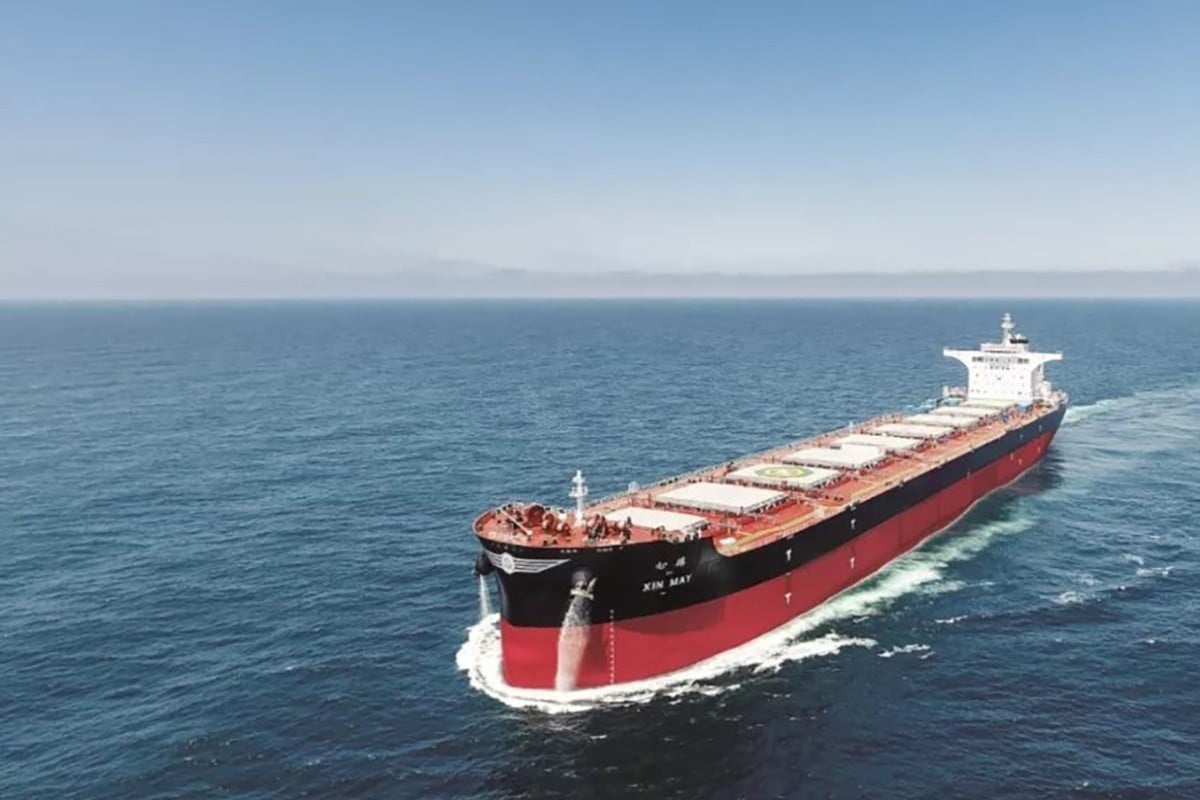
Freight shipping rates for dry bulk and crude oil have begun to show early signs of recovery as factories in China resume production after the coronavirus outbreak. Container cargo shipping lines may have to wait longer for a rebound.
The Baltic Dry Index, a composite of dry bulk time-charter averages across major routes and ship sizes, has risen 50 per cent to 617 on March 6, from a four-year low of 411 on February 10, according to the Baltic Exchange. The index slumped from 2019’s peak of 2,518 on September 4. Charter rates for very large crude carriers, or VLCC, have also regained some footing in recent weeks.
The revival follows a thawing in production activity in the world’s second-largest economy as the government eased restrictions on factory production after an extended Lunar New Year holiday. Manufacturing is showing signs of recovery, based on MioTech’s analysis of China’s nitrogen dioxide emissions in January at the start of China’s coronavirus lockdown, and February.
“We think that the dry bulk rates will rise first, as China starts needing raw materials first as the economy comes back,” said Andrew Lee, an analyst of Jefferies, adding that freight forward agreements in the sector are showing signs of life.”
Spot rates are expected to continue rebounding as Chinese economic activities begin to normalise and construction returns, Jefferies said in a March 4 report. It forecasts daily rates for Capesize ships, or large dry-cargo ships, to rise from about US$2,000 a day this quarter to US$10,000 in the second quarter, and to more than US$16,000 by the fourth quarter.
The rate for dry bulk ships, which typically carry iron ore, coal and agricultural products, slumped in late 2019 as China’s economic growth eased to the slowest since 1990. China accounted for 23 per cent of seaborne crude oil, 35 per cent of dry bulk, 18 per cent of liquefied gas and 72 per cent of iron ore shipped, according to Clarksons Research.
“The dry bulk market still has loss-making freight rates across the board, but there has been a bottoming out taking place,” said Peter Sand, the chief shipping analyst for BIMCO, the world’s largest international shipping association.
“The forward FFA (forward freight agreement) curve is showing an upward trend, so there is some expectation that there will be a recovery, although most people expect the first half to be tough going,” said Tim Huxley, director of Hong Kong-based Mandarin Shipping. The rebound in the Baltic Dry Index reflects “firmer activity” in the Atlantic region, he added.
Crude tankers carrying oil from the Middle East to China have seen their daily charter rates plummet as Chinese demand cooled with the slowing economy. Daily charter rates for these VLCC tankers from the Persian Gulf to China have risen to US$28,816 per day on March 5 from US$12,500 a month ago. They averaged US$72,641 in January and surged above US$300,000 in September last year.
A March 2 report by IHS Markit noted that the final week of February saw a resumption of industrial production in China, with infrastructure projects being restarted, with larger enterprises resuming work faster than smaller enterprises. The enormous backlog of orders was creating the conditions for a sharp jump in production, it said.
Container cargo lines may have to wait longer for relief, as it takes time for manufactured goods to roll out of factories for export, Lee of Jefferies said. China accounted for 14 per cent of all containerised cargo transport last year.
The spot market container freight composite index in Shanghai fell by about 14 per cent in the first two months this year, according to the Shanghai Shipping Exchange.
“Most worrying though is the lack of cargo we are experiencing now; that is down much more than rates,” BIMCO’s Sand said. “No one can cut costs at such pace.”
brought to you by SCMP Research and enjoy a 20% discount (original price US$400). This 60-page all new intelligence report gives you first-hand insights and analysis into the latest industry developments and intelligence about China AI. Get exclusive access to our webinars for continuous learning, and interact with China AI executives in live Q&A. Offer valid until 31 March 2020.







